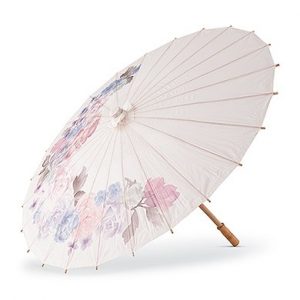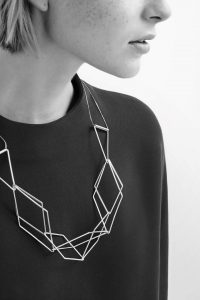Description:
I am creating a series of necklaces, that will be attached to the neck. I am also creating a parasol that will be connected to the hand. My cultural heritage is Chinese and Taiwanese and I am thinking specifically about connecting the Chinese history of the parasol, or the umbrella, and origami, to this project.
Goals:
For materials, I will use small wooden sticks and dowels, and fabric. The wooden sticks will serve as the edges and sides of the platonic solids, and the platonic solids will not be solid, but skeleton or frame-like representations of the solid figures. The necklaces will have several translated, reflected, and rotated versions of the platonic solids, connected to each other and enclosed with a chain to make them wearable on the neck. The necklaces’ angular shapes will complement the frame of the body, and contrast with the organic nature of the body. The necklace will complement the shape of the face, neck, and collarbones. Clothing worn on the final critique will be simple as to not distract from the intricate and delicate details of the necklaces and parasol.
The parasol, or umbrella, will connect more to my culture, since they were used in the Cao Wei dynasty as early as 1,700 years ago. They were originally made with silk, and wax or lacquer was applied to make them waterproof. Mulberry branches or bamboo was used for the frame of the umbrella (Gbtimes). Even the Chinese character for umbrella can be seen as a folded umbrella: 伞. To connect to this ancient art of parasol making, I plan to use the delicate wooden sticks as a parallel to the mulberry branches and bamboo. I will incorporate a more modern twist by using the platonic solids to create a collapsible frame, using principles from origami, a term referred to in Chinese as zhezhi (摺紙). Connected to the hand holding it, the design will have rhythm and somewhat hide the figure because the parasol will be the main focus. The constructed form of the parasol will defy and challenge the forms on the human body because of the contrast between angular and organic states.

